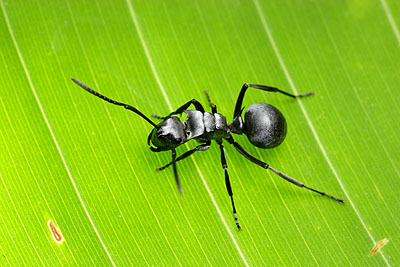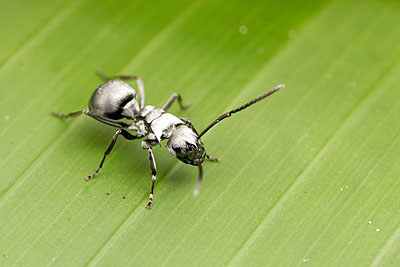Among the more charismatic ants I saw during my visit to South Africa was a silver Polyrhachis that seemed all too happy to pose for me. With such an unusually cooperative subject, I was able to experiment with several different arrangements of the flash heads on my MT-24EX twin flash. Compare these two shots, differing only in the placement of one of the two heads:


Polyrhachis schlueteri, St. Lucia, KZN, South Africa
The top photo is the clear winner. The MT-24EX has detachable heads, and what I did here was remove one of them and hand-hold it under the leaf, facing upward at the ant. This backlighting illuminated the leaf from below, giving it that lively green glow. The other head remained on the camera and was diffused by a double layer of tracing paper.
The bottom photo was taken a few minutes earlier using my standard diffuser with both heads mounted on the camera. While the diffuser really brings out the silver reflections on the ant, the diffused flash also reflects off the surface of the leaf and obscures the richness of the green.
photo details: Canon MP-E 65mm 1-5x macro lens on a Canon 20D
ISO 100, f/13, 1/250 sec
Read Full Post »












